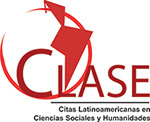El Impacto del apoyo psicoeducativo en la inclusión escolar de estudiantes con necesidades especiales
DOI:
https://doi.org/10.23857/dc.v11i3.4464Palabras clave:
Inclusión escolar, apoyo psicoeducativo, necesidades especiales, participación activa, autoestimaResumen
La inclusión escolar de estudiantes con necesidades especiales representa un desafío fundamental para los sistemas educativos actuales, donde la falta de apoyos adecuados limita su participación, bienestar emocional y desarrollo integral. El problema central de esta investigación radicó en identificar el impacto del apoyo psicoeducativo en la mejora de la inclusión escolar de estos estudiantes, buscando evidenciar si dicho apoyo contribuye efectivamente a su integración y éxito académico. El objetivo principal fue evaluar el impacto del apoyo psicoeducativo en la inclusión escolar de estudiantes con necesidades especiales en la zona 3 del Ministerio de Educación. Para ello, se empleó un enfoque cuantitativo, descriptivo y correlacional bajo el paradigma positivista. La muestra estuvo conformada por 50 estudiantes seleccionados mediante muestreo no probabilístico. Se aplicó un cuestionario validado por expertos, con un coeficiente alfa de Cronbach de 0.87, garantizando la fiabilidad del instrumento. Se utilizaron pruebas estadísticas como la t de Student para muestras relacionadas y el tamaño del efecto con d de Cohen para analizar la magnitud del impacto. Los resultados revelaron mejoras significativas en el nivel de inclusión escolar (d=0.95), percepción del apoyo recibido (d=0.78), reducción de barreras emocionales (d=0.68), incremento en la participación activa (d=0.88) y aumento en la autoestima y autoconcepto académico (d=0.91). Estos hallazgos demuestran que el apoyo psicoeducativo tiene un impacto positivo y sustancial en la inclusión auténtica de los estudiantes con necesidades especiales. En conclusión, el estudio confirma que una intervención psicoeducativa integral es clave para fortalecer procesos inclusivos efectivos, promoviendo no solo la equidad educativa, sino también el bienestar emocional y social de los estudiantes. Se recomienda fortalecer la formación docente y ampliar recursos psicoeducativos para garantizar la sostenibilidad de estos avances.
Citas
Ainscow, M., Booth, T., & Dyson, A. (2006). Improving schools, developing inclusion. Routledge.
Ainscow, M., & César, M. (2006). Inclusive education: The way of the future. Prospects, 36(4), 341-350. https://doi.org/10.1007/s11125-007-9044-7
Cohen, J. (1988). Statistical power analysis for the behavioral sciences (2nd ed.). Routledge.
Creswell, J. W. (2014). Research design: Qualitative, quantitative, and mixed methods approaches (4th ed.). SAGE Publications.
Dyson, A., Howes, A., & Roberts, B. (2010). Inclusion and pupil achievement. British Educational Research Journal, 36(1), 99-116. https://doi.org/10.1080/01411920902878982
Echeita, G., & Ainscow, M. (2011). Inclusive education research and practice: Lessons and challenges. International Journal of Inclusive Education, 15(3), 243-251. https://doi.org/10.1080/13603110903560060
Field, A. (2018). Discovering statistics using IBM SPSS statistics (5th ed.). SAGE Publications.
Florian, L., & Black-Hawkins, K. (2011). Exploring inclusive pedagogy. British Educational Research Journal, 37(5), 813-828. https://doi.org/10.1080/01411926.2010.501096
Forlin, C., & Chambers, D. (2011). Teacher preparation for inclusive education: Increasing knowledge but raising concerns. Asia-Pacific Journal of Teacher Education, 39(1), 17-32. https://doi.org/10.1080/1359866X.2010.540850
Loreman, T., Deppeler, J., & Harvey, D. (2010). Inclusive education: Supporting diversity in the classroom (2nd ed.). Routledge.
MINEDU. (2023). Reporte de inclusión educativa en estudiantes con necesidades especiales. Ministerio de Educación del Perú.
Nunnally, J. C., & Bernstein, I. H. (1994). Psychometric theory (3rd ed.). McGraw-Hill.
Salend, S. J. (2011). Creating inclusive classrooms: Effective and reflective practices (7th ed.). Pearson.
Shapiro, S. S., & Wilk, M. B. (1965). An analysis of variance test for normality (complete samples). Biometrika, 52(3-4), 591–611. https://doi.org/10.1093/biomet/52.3-4.591
Smith, D. D., Polloway, E. A., & Patton, J. R. (2014). Teaching students with special needs in general education classrooms (9th ed.). Pearson.
Slee, R. (2018). Inclusive education and the politics of difference. Routledge.
UNESCO. (2020). Global Education Monitoring Report 2020: Inclusion and education – All means all. UNESCO Publishing. https://unesdoc.unesco.org/ark:/48223/pf0000373718
Villa, R. A., Thousand, J. S., Nevin, A. I., & Malgeri, C. (2013). A guide to co-teaching: Practical tips for facilitating student learning (2nd ed.). Corwin.
World Medical Association. (2013). World Medical Association Declaration of Helsinki: Ethical principles for medical research involving human subjects. JAMA, 310(20), 2191–2194. https://doi.org/10.1001/jama.2013.281053
Organización Mundial de la Salud (OMS). (2022). Informe mundial sobre la discapacidad. OMS.
Organización de las Naciones Unidas (ONU). (2015). Agenda 2030 para el Desarrollo Sostenible. https://sdgs.un.org/es/2030agenda
Cohen, J. (1992). A power primer. Psychological Bulletin, 112(1), 155-159.
Field, A. (2009). Discovering statistics using SPSS (3rd ed.). SAGE Publications.
Loreman, T., & Deppeler, J. (2007). Disability, human rights and inclusive education. Australian Journal of Human Rights, 13(2), 21-46.
Descargas
Publicado
Cómo citar
Número
Sección
Licencia
Derechos de autor 2025 Gerardo José Chacón Yupangui, María Antonieta Espinoza Bustamante, Yadira del Rosario Espinoza Becerra, Rosa María Flores Mendoza

Esta obra está bajo una licencia internacional Creative Commons Atribución 4.0.
Authors retain copyright and guarantee the Journal the right to be the first publication of the work. These are covered by a Creative Commons (CC BY-NC-ND 4.0) license that allows others to share the work with an acknowledgment of the work authorship and the initial publication in this journal.






